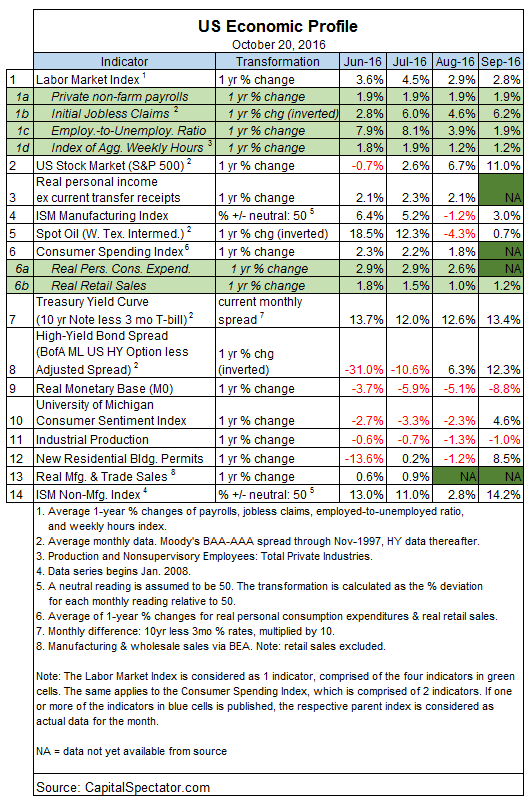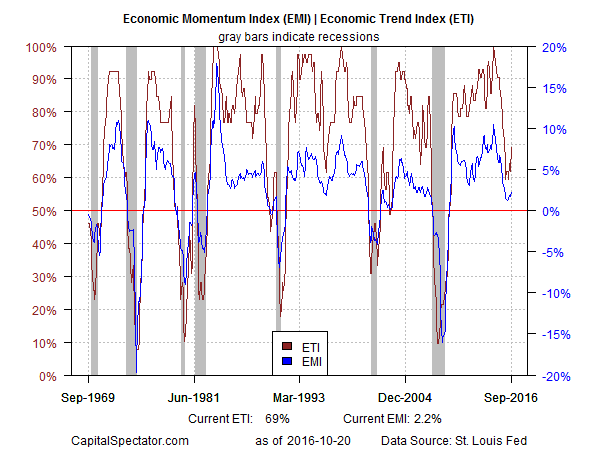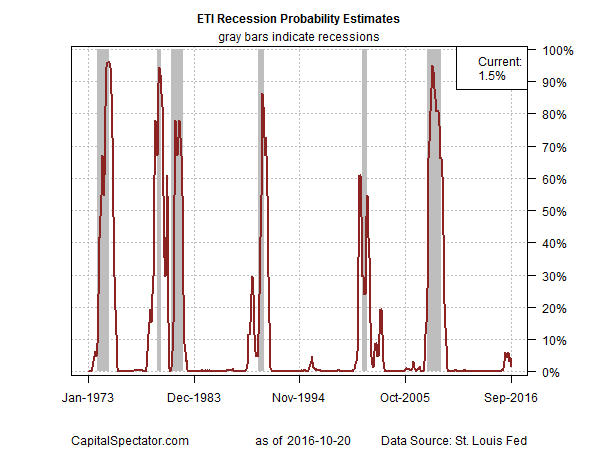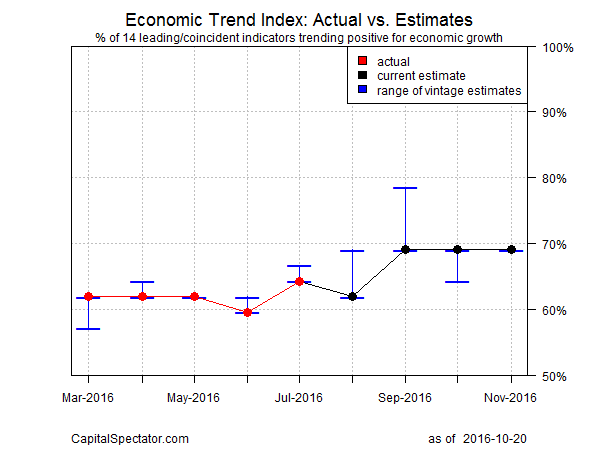The US economic trend remained positive through September: strong enough to keep recession risk at a low level but still too soft to fully dismiss concerns about the near-term outlook. Nonetheless, macro momentum has picked up a bit after decelerating earlier in the year—in line with the Capital Spectator’s recent projections. But as we’ll discuss, the near-term forecasts now point to a stable but relatively muted trend for the immediate future.
The good news is that the September economic profile suggests a low probability that last month marked the start of an NBER-defined recession. Ditto for projections through November. But while a new downturn remains unlikely at the moment, based on numbers published to date, the US continues to struggle with a slow-growth bias. Note, however, that the majority of key indicators continue to trend positive. (Keep in mind that The Capital Spectator monitors the macro trend across a broader set of data and analytics on a weekly basis in The US Business Cycle Risk Report.)

Aggregating the data in the table above into business cycle indexes reflects a broad trend that remains positive. In fact, the Economic Trend and Momentum indices (ETI and EMI, respectively) ticked up since last month’s update and both benchmarks remain moderately above their respective danger zones: 50% for ETI and 0% for EMI.
When/if the indexes fall below those tipping points, we’ll have clear warning signs that recession risk is at a critical level, in which case a new downturn is likely. The analysis is based on a methodology outlined in Nowcasting The Business Cycle: A Practical Guide For Spotting Business Cycle Peaks.

Translating ETI’s historical values into recession-risk probabilities via a probit model also points to low business-cycle risk for the US through last month. Analyzing the data with this methodology shows that the numbers still imply that the odds are virtually nil that the National Bureau of Economic Research (NBER) — the official arbiter of US business cycle dates— will declare September as the start of a new recession.

For perspective on looking ahead, consider how ETI may evolve as new data is published. One way to project future values for this index is with an econometric technique known as an autoregressive integrated moving average (ARIMA) model, based on calculations via the “forecast” package for R.
The ARIMA model calculates the missing data points for each indicator and for each month–in this case through November 2016. (Note that July 2016 is currently the latest month with a complete set of published data.) Based on today’s projections, ETI is expected to remain above its danger zone for the near term by holding above the 50% mark.

Forecasts are always suspect, of course, but recent projections of ETI for the near-term future have proven to be relatively reliable guesstimates vs. the full set of published numbers that followed. That’s not surprising, given the broadly diversified nature of ETI.
Predicting individual components, by contrast, is prone to far more uncertainty. The current projections (the four black dots in the chart above) suggest that the economy will continue to expand. Note, however, that the projections overall point to a trend that’s expected to remain positive but at a moderate pace.
The chart above also includes the range of vintage ETI projections published on these pages in previous months (blue bars), which you can compare with the actual data that followed, based on current numbers (red and black dots).
The assumption here is that while any one forecast for a given indicator will likely miss the mark, the errors may cancel out to some degree by aggregating a broad set of predictions. That’s a reasonable view according to the historical record for the ETI forecasts.
